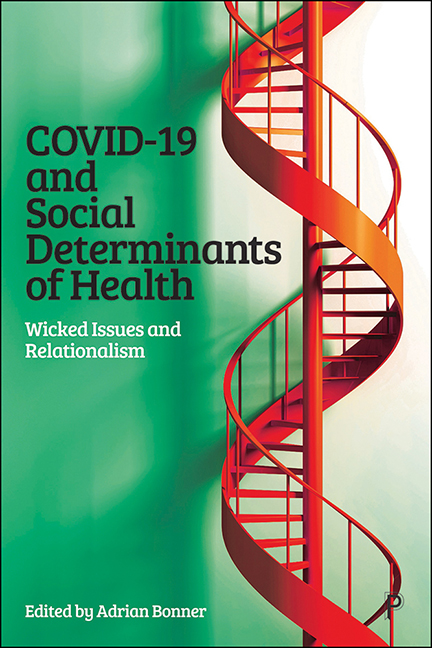Book contents
- Frontmatter
- Miscellaneous Frontmatter
- Contents
- List of figures and tables
- Notes on contributors
- Foreword
- Introduction
- Part I Wicked issues and relationalism
- Part II Regionalism and geopolitical environments
- Part III Public sector, COVID-19 and culture change
- Part IV The third sector
- Part V The case for relationalism
- Part VI Engagement and proposed changes
- Conclusion
- Appendix The Centre for Partnering
- Index
19 - Relational procurement: translating lessons learned from large infrastructural projects
Published online by Cambridge University Press: 18 January 2024
- Frontmatter
- Miscellaneous Frontmatter
- Contents
- List of figures and tables
- Notes on contributors
- Foreword
- Introduction
- Part I Wicked issues and relationalism
- Part II Regionalism and geopolitical environments
- Part III Public sector, COVID-19 and culture change
- Part IV The third sector
- Part V The case for relationalism
- Part VI Engagement and proposed changes
- Conclusion
- Appendix The Centre for Partnering
- Index
Summary
Introduction
Relational contracting has had a marked influence on contemporary discourse about improving performance within the construction and engineering industries. Experience with delivering large-scale infrastructure projects through a partnering approach provides valuable lessons to be learned about the antecedents, processes, outcomes and possibilities associated with public–private partnering. However, that rich experience has also provided considerable insight into the complexities and challenges of developing and embedding relational contracting in practice and in directing that joint effort to achieve superordinate (project) goals. Added to the wicked problems those efforts attempt to address are the many challenges and tensions associated with translating the rhetoric of partnering into the reality of collaboration on the ground. Drawing upon established research and thinking on partnering in major infrastructure projects, this chapter elaborates on and explores those challenges and tensions and examines how they may unfold in the context of public–private collaboration designed to address wicked social and cultural issues. Particular emphasis is placed upon understanding the organisational cultural antecedents of partnering and how these may evolve as collaborative relationships are established and develop between organisations that straddle the public– private divide.
Relational contracting in the construction industry
The origins of relational contracting in the construction industry can be traced back to the search for a solution to communication and coordination problems that bedevilled construction industry performance in the postwar period. From the 1960s onwards, UK government and industry-led reports highlighted the fragmentation within this project-based industry (between clients, designers, builders) and observed how it had consistently led to delays in project completion, exorbitant costs and problems in meeting client specifications and quality standards (for example, Higgin and Jessop, 1965; Latham, 1994). Competitive tendering, the system of contracting commonly used on infrastructure projects, was seen as a major contributing factor. By driving down tender prices, it created incentives for successful bidders to exploit complexities and uncertainties in the construction process, as well as variations introduced by clients, by pricing the additional work required to recoup the costs of tendering and squeezed margins.
Information
- Type
- Chapter
- Information
- COVID-19 and Social Determinants of HealthWicked Issues and Relationalism, pp. 351 - 365Publisher: Bristol University PressPrint publication year: 2023
